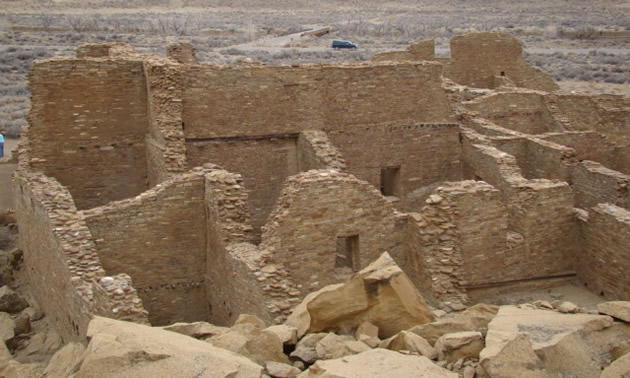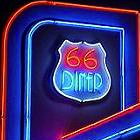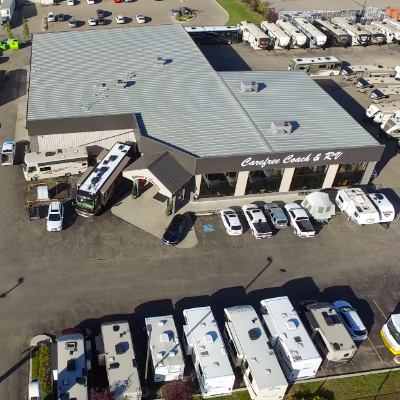The mysteries of Chaco Canyon
Fabulous multi-storey stone cliff dwellings built by the ancients

There is a place in northwest New Mexico that is shrouded in mystery. The Chaco Culture National Historic Park is located 65 miles south of Bloomfield. From AD 850 to AD 1250, the Anasazi or “ancestral puebloans” built a civilization in the Four Corners area, specifically the San Juan River Basin. Although Europe was still in the Dark Ages, the Anasazi civilization was flourishing. The pueblo people or “ancient ones” are famous for their multi-storey stone cliff dwellings, like the Cliff Palace in Mesa Verde and the White House in Canyon de Chelly. Although archeologists can explain many facets of the pueblo culture, Chaco Canyon has not revealed all its mysteries.
Mystery one: the purpose of Chaco Canyon
There are two theories:
1. Chaco was a trade/distribution/administrative center with 11 great houses and the Casa Rinconada underground chamber, or kiva. There is plenty of evidence to support the trade theory, with goods from the Pacific Coast and Mexico found on-site. There were an estimated 5,000 people who lived in the area and, combined with 300 miles of roads in all directions, Chaco could easily have been a trade center.
2. Chaco was a religious/ceremonial center, with the 11 great houses constructed in a complex celestial pattern. There is plenty of evidence that Chaco was a center of astronomy and cosmology and that the primary purpose for the buildings was to express astronomical interests. The buildings are placed on a north-south alignment shaped like the letter D, with the moon rising and setting along the straight wall.
The largest of the great houses was Pueblo Benito (pretty village), which had its own calendar. On the winter solstice, the sun enters the southeast second floor corner window and shines through the opposite diagonal corner door into the back room.
Mystery two: roads
The Chacoans built eight major roads with 300 miles of pathways in every direction. The most impressive is the North Road, which is 42 miles (68 km) long and runs straight along the 108th line of longitude before disappearing into the badlands of the San Juan River basin. The roads were 30 feet wide, flat, had ramps to keep them level and earth mounds for observation. Some roads ran parallel, while others wandered to outlying communities. Some roads end at a canyon wall with stairs climbing up to the top. These roads were built when the Anasazi had no pack animals or compass and did not understand the mechanics of the wheel or pulley system.
Mystery three: the people
Despite the 11 great houses, very few people ever lived in Chaco Canyon. Pueblo Benito has 800 rooms, 37 kivas and two central plazas, yet only 100 people ever lived on site. Archaeologist have examined trash middens, burial sites, broken pot mounds, lack of hearths and other evidence to conclude that many of the houses were never used, or used only on a temporary or ceremonial basis.
Mystery four: the sun dagger
When you approach Chaco Canyon from the north, Fajada Butte comes into view. Near the top of the 380-foot butte, three vertical rocks and two petroglyphs create a seasonal calendar. As the sun passes over the rocks, the sun dagger cuts across the petroglyphs, indicating the seasons of the year at the equinoxes and solstices. The sun dagger has other functions, including tracking the 18.6-year lunar cycles. See the Solstice Project by Anna Sofaer.
Mystery five: the end of Chaco Canyon
The Chaco phenomenon did not last. By AD 1150, Chaco Canyon was in decline and by a hundred years later villages like Mesa Verde were abandoned. The reasons for the decline are many and complex. Population growth combined with a massive drought that lasted 30 years probably caused the Anasazi to abandon Chaco in order to survive. The great migration would take place over 150 years in the Four Corners area. The Anasazi did not disappear, but evolved into other Amerindians like the Zuni, Hopi, Acoma and other modern tribes. At Chaco, the Anasazi seemed to have left abruptly left, leaving behind their property, sealing their homes, burning what was left and moving on.
There are many other mysteries concerning Chaco that are not completely understood. They include why they built in such a harsh environment, the meaning of their petroglyphs and the Anasazi spirit world. There’s an interesting DVD on the subject called The Mystery of Chaco Canyon, narrated by actor/director Robert Redford.








